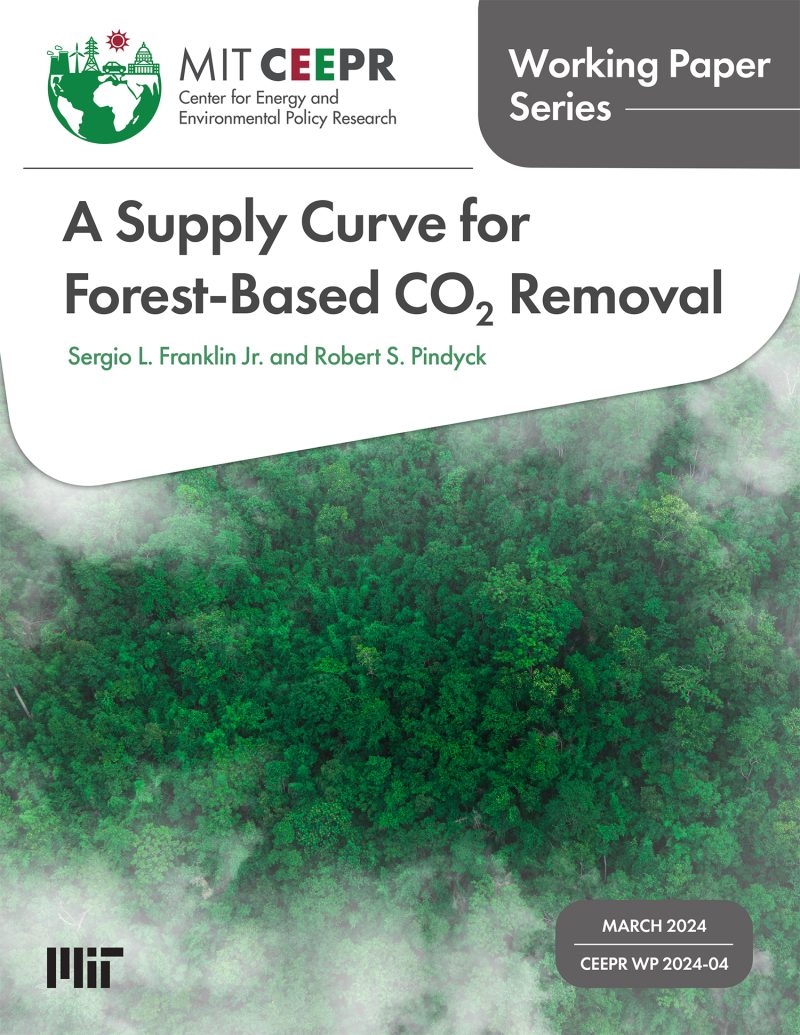A Supply Curve for Forest-Based CO2 Removal
Sergio L. Franklin Jr. and Robert S. Pindyck
March 2024
Forestation is viewed as an important means of removing CO2 from the atmosphere and thereby reducing net CO2 emissions. But how much CO2 can be removed, and at what cost? Focusing on forested and forestable areas in South America, and using spatially disaggregated data, we estimate a supply curve for forest-based atmospheric CO2 removal. The supply curve traces out the marginal cost of removing a metric ton of CO2 as a function of total annual CO2 removal. Each point on the curve corresponds to a specific location, and accounts for land opportunity costs as well as costs of tree planting and maintenance. We show that over a billion tons of CO2 can be removed annually via forestation at a cost below $45 per ton, and about 2.5 billion tons can be removed at a cost below $90 per ton. The supply curve applies to only South America, but with sufficient data could be extended to the entire world.
JEL Codes: Q5, Q57, C6
Keywords: Forestation, deforestation, land opportunity cost, tree planting costs, feasible forestation, CO2 emissions, CO2 removal, net emissions, Amazon rainforest, Atlantic forest, Chaco forest, supply curve



